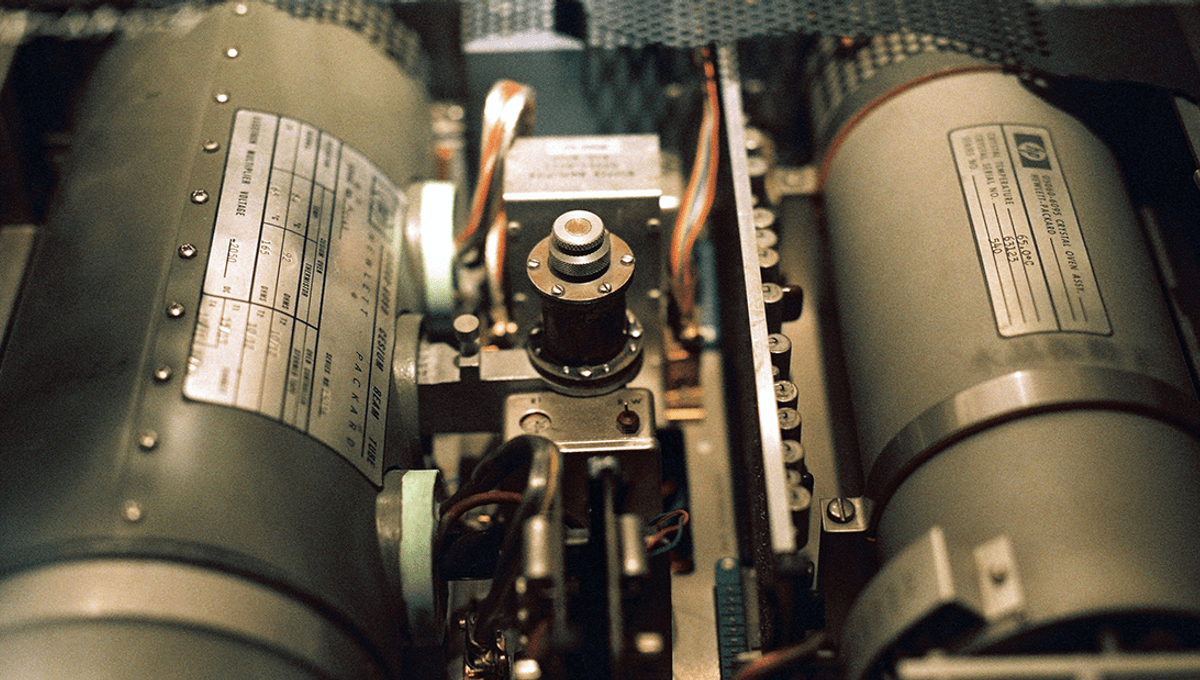
A new experiment involving a network of entangled atomic clocks could finally help us test how quantum mechanics fits with general relativity.
Quantum mechanics is our best understanding of the universe at atomic and subatomic scales. With it, we have revolutionized our understanding of physics on teeny tiny scales. General relativity – first outlined by Albert Einstein in 1915 – meanwhile, is our best understanding of gravity. According to the theory, which has so far passed every test we have thrown at it, gravity is not a force but the result of the curvature of spacetime around matter.
But here’s the kicker; the two do not play well together.
“Quantum physics relies on two simple ideas: point particles make no sense; and the Heisenberg uncertainty principle, which states that one can never know the value of certain pairs of quantities with absolute precision — for example, the position and velocity of a particle. This is because particles should not be thought of as points but as waves; at small scales they behave as waves of matter,” Valerio Faraoni, Professor of Physics & Astronomy at Bishop’s University, and Andrea Giusti, Postdoctoral fellow at the Swiss Federal Institute of Technology Zurich, explain in a piece for The Conversation.
“This is enough to understand that a theory that embraces both general relativity and quantum physics should be free of such pathologies. However, all attempts to blend general relativity and quantum physics necessarily introduce deviations from Einstein’s theory.”
These include mathematical inconsistencies, which don’t make physical sense and are likely telling us our understanding of gravity or quantum mechanics needs refining.
Testing precisely how spacetime curvature affects quantum mechanics could help us to unite the two theories. But designing such an experiment is troublesome, primarily because of how weak gravity is as a force compared to the other three fundamental forces.
“Quantum gravitational effects have widely been believed inaccessible by experiment because enormously high energy densities are required to make them comparably large as other quantum effects,” German theoretical physicist Sabine Hossenfelder explains on her website.
“This argument however neglects that quantum effects of gravity can also become relevant for massive objects in quantum superpositions. Once we are able to measure the gravitational pull of an object that is in a superposition of two different places, we can determine whether the gravitational field is in a quantum superposition as well.”
In the new paper from Igor Pikovski at Stevens Institute of Technology, Jacob Covey at the University of Illinois at Urbana-Champaign, and Johannes Borregaard at Harvard University, the team suggests a way we might be able to test how gravity and the quantum world play with each other.
“The interplay between quantum theory and gravity is one of the most challenging problems in physics today, but also fascinating,” Pikovski explained in a statement. “Quantum networks will help us test this interplay for the first time in actual experiments.”
The idea is to use entangled atomic clocks placed a kilometer apart. While they are in superposition, the clocks would experience different time flows (the result of being at different positions relative to Earth’s gravitational field), potentially allowing us our first glimpse of how quantum mechanics and curved spacetime work together.
“Our protocol is based on two recent technologies—optical atomic clocks and quantum networks—that are being developed to distribute quantum entanglement over large distances,” the team explains in their paper.
“We show that one can delocalize a single optical atomic clock over three locations with kilometer-scale separations based on the use of quantum networking nodes composed of atom arrays. Each pair of nodes can share entangled Bell pairs on demand. The evolution of the clock is then delocalized over all three nodes, and it records different times because of the presence of the gravitational field. Subsequent quantum teleportation to a single node would allow us to observe a three-node interference between all three times, revealing how quantum interference, time dilation, and spacetime curvature all intertwine.”
While this is currently just a proposal, conducting the experiment could be a huge step towards unifying quantum mechanics and general relativity. We fundamentally do not know how to do this yet, so the results, if the experiment is performed, would be a huge boon for physics.
“We assume that quantum theory holds everywhere — but we really don’t know if this is true,” Pikovski added. “It might be that gravity changes how quantum mechanics works. In fact, some theories suggest such modifications, and quantum technology will be able to test that.”
The paper is published in PRX Quantum.
Source Link: Entangled Atomic Clock Experiment Could Finally Provide Hints At A Theory Of Everything